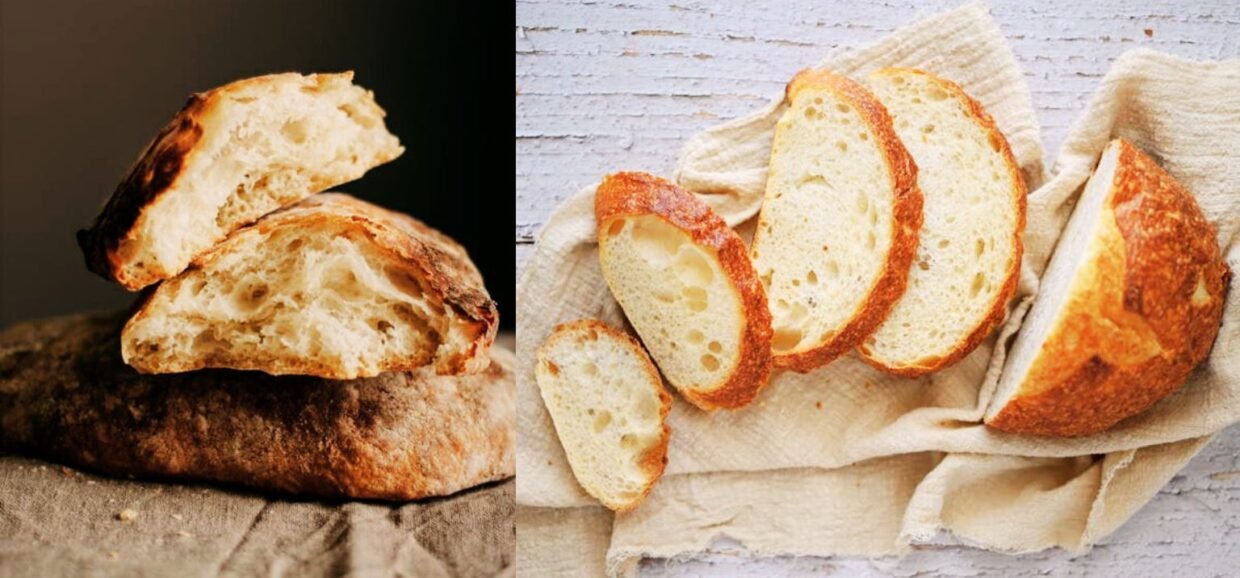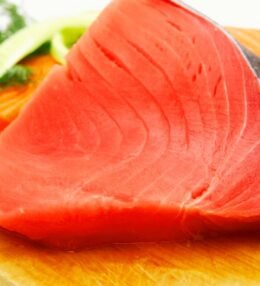While the basic components of sourdough include wheat flour, water, salt, and a sourdough starter, the type of flour you use can dramatically influence the final product. When it comes to experimenting with your sourdough recipe, two intriguing ingredients are white rye flour and semolina flour. Each brings its distinct characteristics to the table, but what happens when you mix them?
Table of Contents
White Rye Flour Sourdough
In many sourdough recipes, white rye flour is valued for its milder flavor and lighter texture than regular rye flour. Compared to whole rye flour, white rye flour has a finer texture and a lighter color since it is made from the rye grain’s endosperm. This kind of flour pairs well with the tanginess of sourdough because of its subtle, slightly nutty flavor. It’s less dense, which contributes to your bread’s lighter crumb.
Though in a softer form, white rye flour still has some of the dietary advantages of rye. It provides an excellent supply of vitamins, minerals, and dietary fiber. Because of its softer texture, which makes it simpler to digest than whole rye flour, it’s a popular option for people who want the health benefits of rye without the heavy taste.
Semolina Flour
Semolina flour is another adaptable component; it’s frequently used in pizza and pasta dough. It has a unique flavor and texture and is manufactured from durum wheat. Semolina flour contains a hint of yellow color and is coarser than white rye flour. This flour helps give the bread a chewy texture and a robust, nutty taste. Though its use in pasta is especially well-known, its special qualities can also give sourdough a unique twist.
Protein-rich semolina flour is good for the development of gluten. It also includes several minerals and B vitamins. Bread’s nutritional value can be raised by using semolina flour, which also gives bread a firmer texture and deeper flavor.
Semolina Flour with White Rye Sourdough Together
What impact does semolina flour have on your white rye sourdough, eventually?
- Potential Impacts on Taste and Texture: A nice crunch and earthy taste can be added to a white rye sourdough recipe by including semolina flour. The bread’s crumb structure can be altered by the coarseness of the semolina flour, giving it a significantly denser texture. If you like a heartier loaf with a more nuanced texture, this can be a welcome departure.
- Suggested Ratios and Methods: Start with a tiny amount of semolina flour in your sourdough recipe to see how it influences the finished product. An excellent place to start is by substituting semolina for 10–20% of the white rye flour. In this manner, you can incorporate the special qualities of semolina while preserving the original qualities of the rye flour.
NOTE: As semolina flour absorbs more water than white rye flour, be sure to adjust your hydration levels. To get the right texture, keep an eye on the dough's consistency and gradually add more water.
Useful Baking Advice
Using a new ingredient in baking might be challenging. Here are some pointers to make sure the outcome of your sourdough is flawless.
- Modifying Hydration Levels: Compared to white rye flour, semolina flour has different absorption characteristics. As a result, you may need to add more water to your dough. In order to prevent the dough from becoming overly sticky, slowly add the water and check its consistency often.
- Keeping an eye on Dough Consistency: When white rye flour and semolina flour are combined, the dough may feel more rigid or coarse. To develop the gluten and get a smooth texture, give it a good knead. Keep a close eye on the dough’s reaction and modify as necessary.
Typical Problems and Their Fixes
Trying out new ingredients might occasionally present unforeseen difficulties. Here are some frequent issues to tackle.
- Possible Difficulties with Baking: If the semolina flour is not properly balanced, the loaf may become denser. In addition, the bread may not rise as much as it would according to your usual recipe.
- Issue Resolution: Make sure the amount of semolina flour you use does not exceed the appropriate amount to prevent denser bread. It can be helpful to adjust the hydration and knead the dough well. If this has an impact on the rise, think about extending the proofing period to let the dough fully expand.
Recipes with and Without Semolina Flour
A fascinating method to experiment with different textures and flavors is to add semolina flour to a recipe for white rye sourdough. Here’s how to contrast a regular recipe with a semolina-based one.
Practically speaking, sourdough prepared with semolina flour frequently has a slightly golden crust and a more noticeable chewiness. Semolina can also add to a more nuanced flavor profile, which ups the intrigue level with every bite.
According to baker feedback and taste testing, sourdough made with semolina flour is generally acclaimed for its richer flavor and hearty texture. In contrast to the tanginess of the sourdough starter, the semolina offers a gentle crunch and an earthy undertone.
The original recipe for white rye might be preferred by bakers who like a more conventional, lighter crumb. Conversely, people who prefer heartier bread with more texture might find the version with extra semolina to be appealing.
Implications for Nutrition
Your white rye sourdough recipe’s nutritional profile may change if you use semolina flour. The high protein content of semolina flour is well known for enhancing the gluten structure of bread. This suggests that in comparison to regular white rye sourdough, the sourdough produced with semolina may have a slightly higher protein content.
Semolina flour contributes extra nutrients, such as iron and B vitamins, to the diet in terms of vitamins and minerals. But generally, there may not be much of a nutritional difference, especially if you substitute only part of the flour with semolina.
Advantages and Considerations for Health
Semolina’s higher protein and mineral content can be advantageous, particularly for people trying to improve their intake of these minerals. Furthermore, semolina flour’s increased fiber may facilitate digestion and increase feelings of fullness.
However, it’s crucial to remember that semolina flour contains gluten if you have any particular dietary issues, including gluten sensitivity. This might not be the greatest choice if you’re baking for a person who is gluten intolerant.









